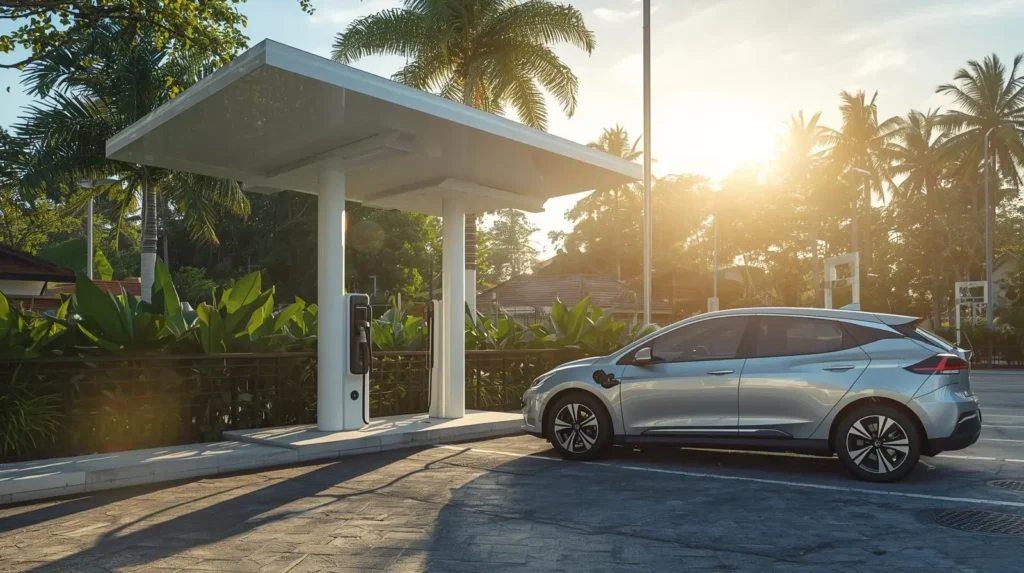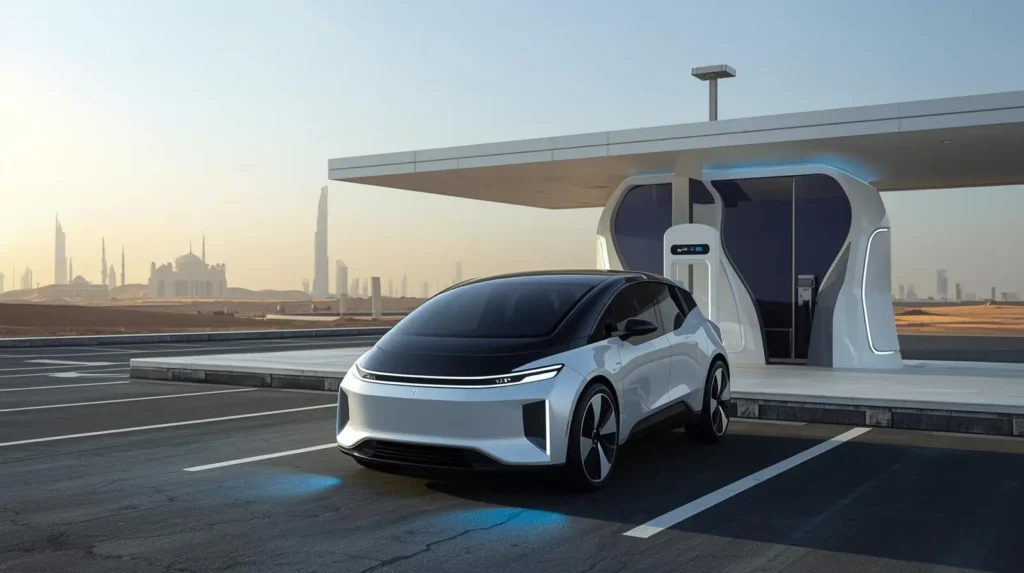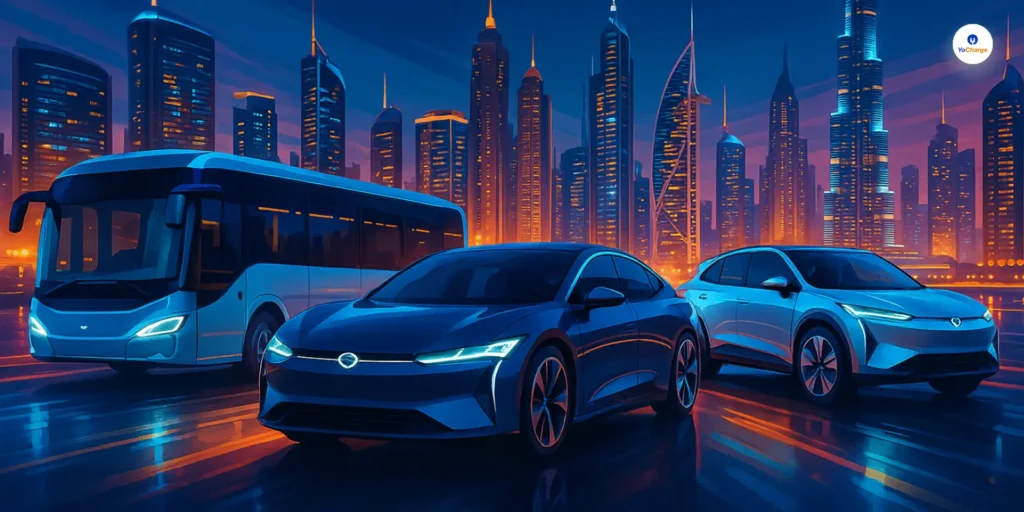It’s 2022, and finally, you can take a road trip through an electric car. Road trips are taking a revolutionary turn and becoming more adventurous for those who are road trip lovers and take journeys for pleasure. As with increasing petrol and diesel prices EV industry is taking a new turn as it is getting easier with improved national charging networks. The average EV range can approach 125 miles, but it makes drivers anxious about battery depletion. The EV market is booming high, and so is the need to take electric vehicles for road trips. So now the question is can you plan an intercity road trip through an electric car?? What are the shortcomings and things you have to prepare in advance before planning an EV road trip!!
This article will share the experience of an EV user who took an intercity EV road trip from Jaipur to Udaipur using Tata Nexon. The valuable insights will shed light on the time taken, cost, range anxiety, availability of charging stations, types of chargers, and tips and tricks.
Read Ahead
So let’s start with a description of the Tata Nexon electric car road trip experience from Jaipur to Udaipur.
With proper planning and sensible driving, we can overcome range limitations. And even electric owners can encounter surprising trip benefits. Here let’s take a virtual experience EV road trip from Jaipur to Udaipur.
Tata Nexon electric car range and facilities:
So it is no wonder that Nexon EV is more efficient in the city, where it gives a range of 216 km, and on the highway, it covers 201 km in a single charge. So with basic knowledge about the electric car and being a first time user, our friend started the journey from Jaipur LIC building Ram Bagh Circle with 95% charge and at a speed of 70-80 km/h. Still, after reaching 135 km from Jaipur, the battery started depleting drastically, and through the Tata app, they were able to locate the nearest charging station on the highway.
The charging station was in the MG service station on the highway between Jaipur to Ajmer. The charger was 50 kW DC with two cables of 25 kW each. The ideal time for charging a vehicle is 45 minutes, but it was a slow charger and took around 1 hour to charge. The temperature out was 45 degrees, and in scorching heat, there was no shelter.
So after 50-60% charging, they left for Ajmer charging station as they could not bear the heat and had no place to sit and relax. As per calculation, they maintained a speed of 70km/h, and with AC on, the range started depleting, so they again had to stop at Ajmer MG workshop, where Tata installed a charger. The charger was the same DC 50 kW with two connecting chargers of 25 kW each. While they were charging there, the guard at the gate was making entries of visitors.
So from that, our friends found information about the person who previously charged his EV from the same place. They contacted the person and asked for more details about nearby charging stations and how to plan their trip further. That guy told them there is a resort named Rani Bagh Resort in Beawar, which has a fast charger, and there you can charge and relax. So after charging EV 40-50%, our friends left for Beawar, which is at a distance of 54 km from Ajmer.
They reached rani bagh resort Beawar around 4.30-5.00 pm in the evening. The charging station had the same 50kW charger with two chargers of 25 kW each. The charging station was installed by Statiq charging infrastructure, and the charger brand was Delta. There they relaxed and charged the EV at full range. From there, they left for Udaipur and by the time-temperature outside also came down, which made their drive easy.
They started for Udaipur at a speed of 80-90 km/h with windows rolled down and the sound system on. But once they reached Bhilwara, which is at 113 km, they noticed the range started depleting drastically. They were quite concerned and worried about the next charging station as they could not locate one. So after a quick research on the app, they found a charging station in Bhilwara. Before reaching Bhilwara, they maintained a 60-70km speed and turned off the sound system.
The charging station in Bhilwara was inside the workshop and not ideally located. Tata installed the charger, and again as said, it took around 1 hour to charge. They left Bhilwara around 11 at night. After calculations and range experience, they drove Tata Nexon at an ideal speed of 60-70 km/h, turned AC and sound system off, and entered Udaipur around 1 am. When they were near Sukher in Udaipur, their EV range depleted. They reached their destination at night, around 1.30 am, with a 6% battery range. The overall experience described using Tata Nexon was tiresome and full of range anxiety.
Shortcomings faced during an EV road trip from Jaipur to Udaipur
- EV range told by Tata Nexon is dynamic
- EV range depletes drastically if you turn on AC and sound system
- You have to maintain an ideal speed of 60-70 km/h
- No proper pitstop for EV charging
- Charging speed on charging station takes more than 45 minutes
- In the hot temperature of Rajasthan inside temperature of the car is pretty high.
- No applications to figure out easily accessible charging stations
- Increased travel time
Things to improve for a better EV road trip experience
Proper planning
Plan intracity road trips in the electric car more smartly. Calculate the battery time and range and where you will need to stop for subsequent charging. Your driving patterns very much impact your battery. Rapid acceleration and more strain on race reduce your range. Set your vehicle to economy mode and increase the amount of regenerative braking for an efficient drive. Plan your route before you hit the road. Google maps can be filtered to highlight EV stations.
EV range
Electric vehicles need more range for intracity road trips. After a road trip experience shared by our EV users, an improved EV range will change the whole electric vehicle ecosystem and give a new direction to sustainable driving in India. The electric automobile industry should improve EV range and make the drive more efficient and easy.
More charging stations
Indian highways need more EV charging infrastructure setup. As per EV range, there should be a changing station at 150 km. The government needs to work on developing more charging stations and encouraging businesses to work on setting up an EV charging point within said range. Soon EV ecosystem will take a full-fledged acquisition on the road, and you will see more EVs on roads which will be a huge success for the environment and sustainability.
Fast chargers and ideal pitstops for EV charging
Charging stations need more fast chargers, and the set-up should be made at an ideal pitstop or location where a person can relax while charging. Charger manufacturing companies should work on inventing fast chargers and reduce the time taken to charge an EV battery. Also, an ideal charging station with food and a relaxing facility helps EV users relax until the EV is charged. Keeping weather conditions in mind, the location for the charging station should be easily approachable and cost-efficient.
Wrapping up – Start with urban adventures
Until the EV infrastructure and driving range improve, it is best to stick to trips around urban areas. Finding a fast charger is very difficult in small towns and rural areas. It takes 8 hours to charge a Level-2 charger, and for fast DC chargers, it will take an hour or less. Remember, it is imperative to cross-check before going to any charging station directly. The possibility might be that you may find only one charger that other drivers use in some places or it isn’t working or can’t communicate with your EV. If you manage a long-distance trip, we advise- planning, planning and planning. Plan your route along charging stations and juice up before range anxiety hits.



